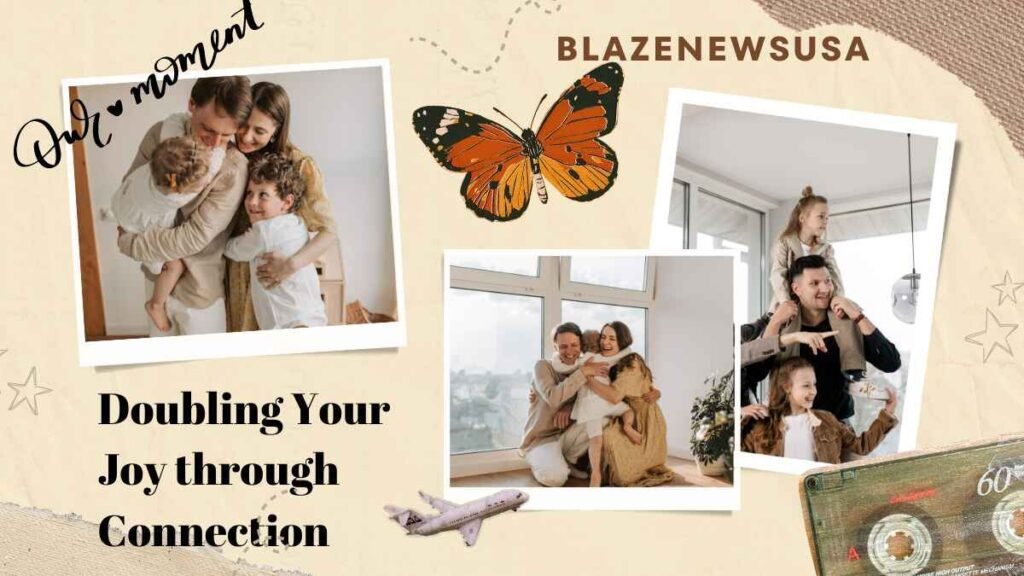Emotions are thus view as central to human narrative: while weaving the fabric of relationships and mapping human strengths. Roland Barthes said, ‘The wisdom of proverbs is beautiful and simple: joy is double, sorrow diminish by sharing. ’ This article seeks to explain the neuropsychological corollary and advantages of emotional exchange. As well as the mechanism of mirror neurons in empathy, and the magnification function of oxytocin. It goes as far as to provide real-life outcomes for the activity of enabling individuals to become emotionally synchronized and build strong.
The Science Behind Shared Emotions
Mirror Neurons: The Basis of Empathy
Based on the findings, key aspects such as empathy and the ability to relate to others’ feelings. They can be express by the mirror neurons. Provide that there are specialized neurons are those that located at the premotor cortex. The inferior parietal cortex, they become active not only when we are acting or experiencing an emotion but also when we are witnessing others acting or experiencing an emotion as well. Neural mimicking bonds us as human beings, allowing us to comprehend joy or sorrow of another person.
Oxytocin: The Love Hormone
The hormone oxytocin, which is known as the ‘love hormone’. That is particularly involve in processes associate with the formation of social bonds and in sharing emotions. Elevate levels of oxytocin are produce during enjoyable positive social relationships and experiences of social attachment. This hormone makes people more trustful and empathetic as well as increasing the awareness of togetherness. They also enhances the impact of shared feelings.
Research on Shared Emotions
Many pieces of research support the positive role of social contagion of emotions. There are numerous studies that support the role of social contagion of emotions. The experiment conducted in the *Journal of Happiness Studies* revealed that people who often talk about the positive changes. They noticed in their day increase their happiness level and improve their relationships. On the other hand, another study done by the American Psychological Association shows that people who express their sorrow are less stressed. They are depressed and anxious as compared to those who do not share their feelings with the people they feel close with.
Doubling Your Joy through Connection

The Amplifying Effect of Shared Joy
Another self-enhancement comes from the understanding that the sharing of pleasurable experiences. The others has an equally powerful effect on our circulating positive feelings. Mention the joy that has united two partners during the wedding. They are holding hands and surrounded by friends and family. When each of the lovers behaves this way it really makes them happy showing. It’s great it is to build a lasting meaningful relationship. Likewise, the joy of fan in a stadium when their team has got a goal. The winning moments is further complimented by enthusiasm.
Practical Ways to Share Joy
1.Participate in Group Activities:
Participate in activities that involve a variety of interests, games, art, and other recreational activities in which the focus is unity of purpose ad achievement.
2.Host Celebrations and Gatherings:
People often like to celebrate various events or important events along with their loved ones because friendly and joyful moments bring happiness.
3.Practice Storytelling:
‘Exchange positive events with others by telling or listening to encouraging or pleasant stories, incidents, and memories facilitate their ability to let others feel the joy brought about by the positive emotions and reacknowledge the social connection.
Cutting Your Sorrows in Half
The Healing Power of Shared Sorrow
This supports the notion that the relief provided by sharing equally lessens the impact of negative feelings. Sometimes, a word of encouragement or someone to hug when it is tough to cope up can mean a lot to the needy. Socially discussing the hardships and frustrations experience, the individual learns about other people’s journeys and how similar issues were addressed.
Supportive Sharing Strategies
1.Practice Vulnerability:
Foster environments across diverse groups in which individuals can freely share their emotions or feelings knowing that such expressions will not be met with disdain or scorn.
2.Cultivate Active Listening:
When individuals discus their troubles, make sure you focus on the issue and completely listen without interrupting them or dismissiveness.
3.Encourage Empathy:
Act in a way that aims to fully grasp and accept the suffering of a person and ask for their forgiveness for not being able to comprehend their suffering as well.
Building a Culture of Shared Emotions
Overcoming Barriers to Sharing
On the positive side, the value of sharing emotions is rather obvious, as it helps make people feel united and practically offers all advantages of having emotion sharing as a general social practice, however, to achieve it, it may be rather difficult. People do not have the confidence and courage to share their thoughts and dreams because the society may not accept them or they may be afraid of judgment or rejection. Eliminating such barriers is an essential step for developing the culture of sharing one’s problems and unrising emotions.
1. Fear of Judgment: Encourage and provide context for people to be vulnerable, especially at work, as it should not be discouraged as it is often seen on the premise of weakness. Lay strong foundations for arguably militant mannerisms of communication by outlining how subordinates should address their superiors and vice-versa and not to share sensitive matters with any unauthorized person.
2.Pride and Self-Reliance:
Reinforce the idea that it is perfectly acceptable to express feelings to others, and that such action does not make one ‘pudder’. Emphasize how trust needed to open up for others and be honest with your emotions demands courage and endurance.
3.Lack of Trust: Promote interaction and use specific communications to earn the trust of the other party gradually. Use the strategy of modeling the behavior that is expect from others by displaying emotions first, so that the others feel encourage to be as open with their feelings.
The Role of Organizations and Communities
The stakeholders who are engaged in organizations and communities that emphasize emotional experiences have observed positive impacts, such as higher levels of staff participation, effective collaboration of workers, and the development of a collective sense of stability. Some corporations such as Pixar and Google have inclusive practices that encourage colleagues to share their emotions and empathize with each other because such experiences are worth both personally and for corporate growth.
Conclusion:
This final exercise demonstrates that each of us has extraordinary potential for empathy and compassion and the desire to share our feelings with others. We are reminded that this means promoting circumstances where joy is amplified, thus sadness diminished as these experiences are shared with others to improve both individuals’ health and strengthen bonds of connection. The neurology of empathy as well as helpful tips to negate these obstacles show that the path towards increased emotional awareness represents an inspiring possibility for individual development as well as improved societal unity. In conclusion, we manage to realize, having a nervous breakdown together, that happiness is even higher and losses are easier to endure when they are mutual.
FAQ‘s:
Ans. Mirror neurons are specialized brain cells that fire not only when we perform an action or feel an emotion ourselves but also when we observe someone else doing the same.
Ans. Oxytocin, often called the “love hormone,” is released during positive social interactions and bonding experiences.
Ans. Sharing joy with others intensifies our positive emotions by validating and celebrating our experiences collectively.
Ans. Sharing sorrow can alleviate emotional burden by providing empathy, perspective, and support from others who understand similar experiences.
Ans. By creating safe spaces for vulnerability, practicing active listening, and encouraging empathy, individuals and organizations can cultivate environments where emotional sharing is valued.

